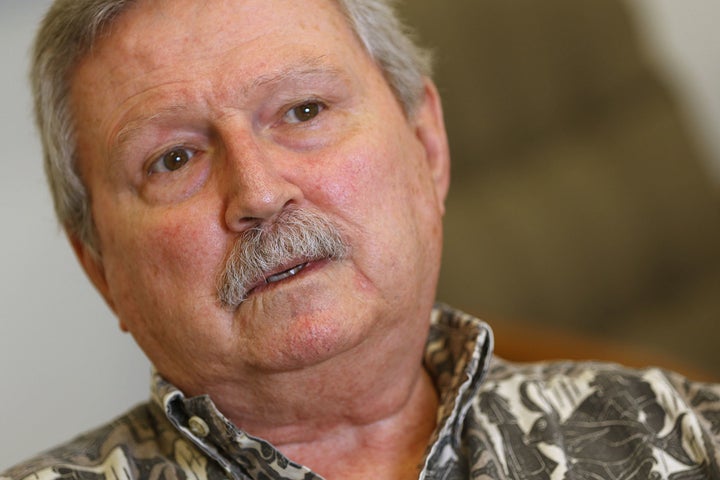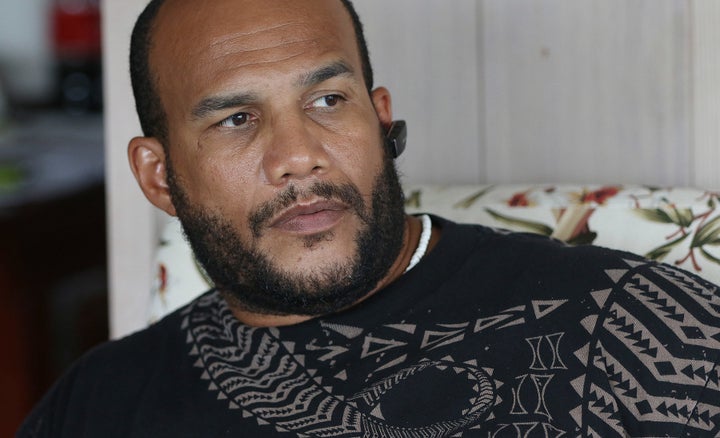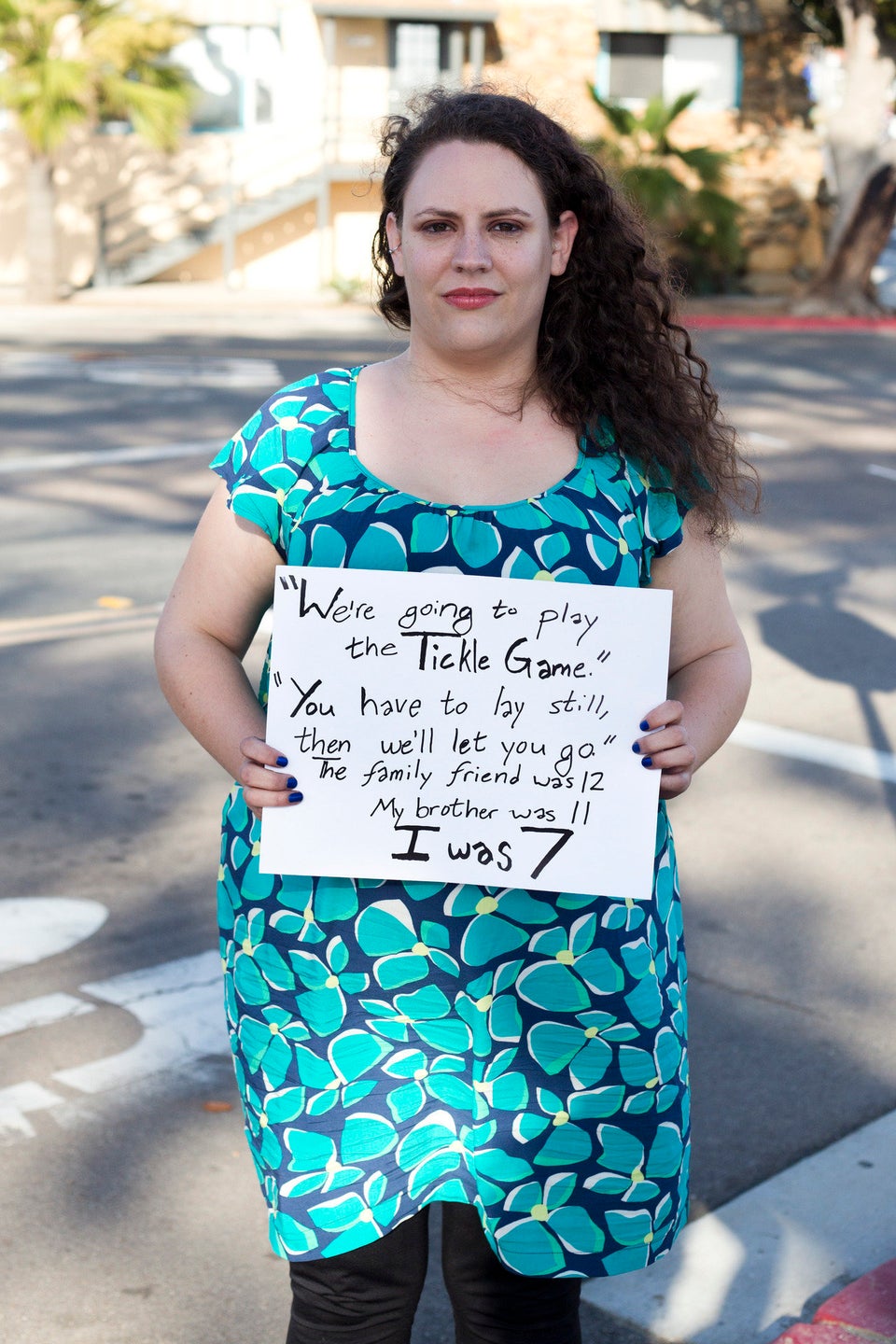One day back in 2003, DeMont Conner sat in a room at the Kulani Correctional Facility, listening to a recording of a frantic 911 call.
A woman was on the line, clearly in distress: Her house was being broken into. Terrified, she was hiding in a closet and begging for help — but to no avail. A man soon broke in, raped the woman and killed her.
Conner, who had been locked up for seven life sentences — including one for a rape conviction — says listening to the recording was "torture." "It hit me really hard. It broke me down. I cried profusely," he said.
The exercise was designed to be a step on Conner’s road to redemption.
Conner was participating in the state’s sex offender treatment program, and learning to empathize with others — particularly his victims — was a prerequisite for success.
"Empathy was not in my vocabulary. I didn’t give a rip about anybody. I just didn’t care," Conner said. "But it got me to understand and appreciate that we cannot continue to victimize people. Simply because we’re angry or because somebody did the same thing to us is no excuse. It’s no justification. That, right there, was an eye opener."
Since 1988, the program has treated more than 800 sex offenders like Conner, setting them on a path to a crime-free life at a remarkable rate: Just 20 of its “graduates” have returned to prison for a new sex crime.
Barry Coyne, the program’s administrator, says the low rate of recidivism — slightly more than 2 percent — makes it one of the most successful sex offender treatment programs in the country.

The key to success is holding sex offenders accountable for their past behaviors.
"Unlike in some other states, we do not treat sex offenders as if they have a mental health disease. If you say to a sex offender, 'Oh, you have a mental problem,' he doesn’t have to take responsibility for that. He has a 'disorder'; it’s not his fault," Coyne said. "Instead, we say, 'You made a choice. A conscious, deliberate choice. And it resulted in a criminal act.' So we're putting the responsibility on them, and they have to change their behaviors. Not like, 'Oh, a doctor’s going to give you a pill.'"
The program is finding success even though it doesn’t cherry-pick by admitting only the most amenable offenders — in contrast to "tough on crime" approaches in the 1980s and 1990s that kept many violent offenders out of treatment.
Kat Brady, coordinator of the Community Alliance on Prisons, hails the program for giving people a second chance — it’s a concept, she says, that’s quintessentially Hawaiian.
"Here, we don’t give up on people," Brady said. "To me, if there are things that we could do to help people better their lives and benefit the community in the long run, then we should be doing everything we possibly can. And that’s what this sex offender treatment program is all about."
'We Love to Manipulate'
With an annual budget of about $450,000, the Hawaii Department of Public Safety offers the program’s core courses at two prisons — the Kulani prison and the Halawa Correctional Facility — and provides "after-care" at each of the state’s four jails to those who are on work furlough and parole.
Coyne says the program is open to almost all sex offenders who are near the end of their sentences; only those who still maintain their innocence, or are appealing their conviction, are ineligible. The goal, after all, is to make the participants accountable for their past behaviors, he says.
About 80 sex offenders are now enrolled in the core courses, and an additional 23 are participating in after-care.
Sessions are held two to three times a week for the core courses and once a week for after-care, but the duration of the program can vary widely — it could be as short as 10 months or as long as four years, depending on the progress of each participant.
"If you’re going to be in (the program), we cannot tell you, 'Here is the date you’re going to finish,'" Coyne said, "because we don’t know how fast you can learn this material to our satisfaction."
The program doesn’t guarantee an automatic ticket out of prison; those who "graduate" can become eligible only for work furlough, not parole.
Conner says the set-up discourages participants from trying to game the system.
"You’re dealing with a population that knows how to manipulate. We love to manipulate," Conner said. "So, when you set a time limit and say, 'We’re going to do 18 months,' I, as a manipulator, will wait you out. I’ll just participate in the program, say whatever you want me to say, do whatever you want me to do, just because I know that, 'If I go through that, I get to do whatever I like.' But, if there’s no concrete timeframe, I can’t do that. So this system gives all the leverage that the department needs to ensure that each graduate of the program is ready for re-entry."

To be considered "ready," participants are expected to develop "cognitive coping skills" that can prevent them from engaging in sexually abusive behavior.
To do that, they first have to acknowledge their past behaviors, learn to empathize with their victims, and recognize the series of bad decisions that led them to commit their crime and figure out how to avoid — or deal with — high-risk situations.
This can be a lengthy undertaking, Coyne says.
"There’s a lot of shame when you commit a sex offense. You want to keep it secret," Coyne said. "So, at the beginning, we spend a lot of time pushing back denial, pushing back minimization, getting you to admit what you really did, as opposed to what you want us to believe you did."
To help ease the process, the program combines individual sessions with group therapies.
"The best people to perceive if you’re telling the truth are other sex offenders," Coyne said. "So, if you are being less than truthful, the other offenders around the table are going to sniff that out and say, 'Bullshit.'"
Coyne also organizes each group based on the participants’ type of offense.
"We try to make sure that there’s a common ground for each group, so that people have an easier time giving feedback to each other," Coyne said. "So, if you’re an incest offender, you should have your own group. If you’re a predatory child molester, we want you in your own group. If you rape adult women, we want you in your own group."
Given enough time, most participants go on to develop their own set of coping skills to steer clear of trouble, Coyne says; only about 3 percent of the participants end up dropping out or getting kicked out of the program.
For Conner, the key was recognizing that he has to be intentional about his actions.
"It’s about the choices that we make," Conner said. "We have the choice every day to choose whether or not we go left or right, or if we’re going to be violent or not going to be violent, or if we’re going to steal or not going to steal. Whatever it is, we always have that choice."
A Violent Crime Spree
Conner is not one to mince words. Ask him about his criminal past, and he gives it straight up: "I was the worst of the worst. I was locked up with the baddest of the bad. And I’ve done the evilest things you can do to a person."
It all stemmed from the “violent upbringing” he had growing up in a Kalihi Valley housing project, Conner says.
"In my immature mind, the violence was always the answer. That was the way you responded," Conner said. "You don’t like what anybody says, punch them in the mouth. You don’t like what they do, punch them in the mouth. If I want to take something from you, I’m just going to take them."
Conner had his first run-in with the law at age 13, when he was arrested for stealing a moped, and kept up on "the career of the streets" until he turned 18 in 1982.
Two months after his 18th birthday, Conner stole a car and got charged as an adult for the first time. He ended up spending the next eight months at the Oahu Community Correctional Center. When he earned a supervised release, he moved to California — in violation of the terms of his release — and became a bodyguard and chauffeur for a big-time cocaine dealer he had met in jail.
After six weeks, Conner returned to Hawaii and immediately went on a violent crime spree, robbing tourists and burglarizing apartments in Waikiki. On his way back from California, he also met a woman at the airport and took her back to his hotel room, where he raped her.
At the time, he had no compunctions about committing the crimes, Conner says.
"The justification that I used was, 'All these haoles and Japanese are coming over here, stealing our land, so I’ll steal from them,'" said Conner, who is half Native Hawaiian. "Honestly, that was the justification that I used to make myself feel better, like I was fighting a cause. But, in actuality, I was just out of control. I needed to be put back inside."
Two weeks after returning to Hawaii, Conner was finally arrested and charged with an array of offenses: attempted murder, kidnapping, rape, robbery and sodomy. Ultimately, he was convicted and received seven life sentences — to be served concurrently — because of Hawaii’s tough rules for repeat offenders.
Conner spent the next several years at Halawa’s maximum-security facility and then got shuffled around on the mainland — prisons in Tennessee, Minnesota and Arizona — until he was sent back to Hawaii in late 2001 to participate in the sex offender treatment program at the Kulani prison.
Looking back now, Conner says being admitted to the program was “one of the best things that ever happened to me.”
'One-Hundred Percent Accountable'
By all accounts, Conner thrived in the program — but, he says, he had to work hard at it.
"The program is tough. It’s no joke," Conner said. "It’s because you’re held 100 percent accountable for everything you’ve done, everything you’ve said and everything you believe. They have your face smashed in your stink until you understood that it was your stink and that you had to fix it. There was no room for blaming others, for denying or minimizing your actions. So you’re forced to deal with yourself and what you’ve done. It was hard for me."
Conner completed the program in 18 months.
"You come to the place where you understand what you’ve done and the extent of the damage of what you’ve done, and it causes you not to go back that way. I get that now," Conner said. "No matter how upset I get today, in any kind of situation, I know it’s not worth it. It is not worth causing harm to another person."
Conner earned a chance for parole in 2004, after spending 21 years behind bars and meeting minimum-sentence requirements.
His freedom was short-lived: A year later, Conner was put back into prison after being accused of a technical violation of the terms of his parole. But he had learned a thing or two about how to represent himself while in prison, so he fought back against the parole board at the federal courts and — after five and a half years — won a reversal of his parole revocation.
Since his release in 2011, Conner has stayed trouble-free. He’s now using his legal knowledge to earn a living doing paralegal work and teaching others how to represent themselves in court.
Lately, Conner has also begun voicing support for establishing a more comprehensive re-entry program for all prisoners in Hawaii, not just sex offenders.
"I’m one of the violent offenders that people often talk about and say, 'To hell with these guys.' And, yet, I’m reformed. I’m rehabilitated. How is that possible?"Conner said. "It’s because elements in the system that taxpayers have paid for are working. Then why not expand it? Here, we have a great opportunity to set the standard for how rehabilitation should work in Hawaii."
Also on HuffPost:
